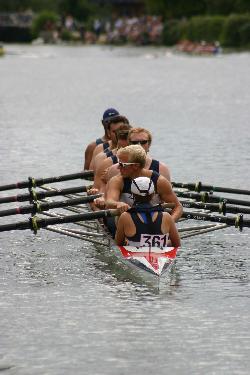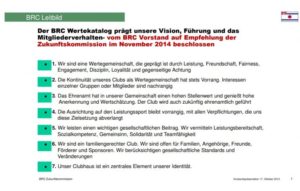
The key requirement for growing membership is to actively recruit new members faster than you lose existing members, while maximising retention. Junior squad recruitment must be focussed on the lower end of the age range, while adult recruitment should be age-blind. All beginners need to be managed in “cohorts” of similar experience for about 12 months following their entry to the sport, with a clear route for progression through the club to whatever level of rowing they aim to achieve. This particular blog does not address the challenge of recruiting the best available athletes.
Turning enthusiastic beginners into long-term club members.
There is real enthusiasm for rowing as a sport in the UK and indeed across much of the sporting world. Reasonably priced beginner courses are easy to fill and junior (under 18) rowing is similarly a growth area. However, some community-based clubs (i.e. clubs not affiliated with a school, university, commercial company or the services) struggle to convert this enthusiasm for the sport into sustained membership growth. Conversion rates from beginner courses to ongoing club membership of a year or more can frequently be under 5% and losses as members move on through work or family commitments are a continual challenge for many clubs seeking to maintain membership numbers.
My personal experience is that it is possible to deliver conversion rates around 50% from adult beginner courses (ie 10 members from a 20-strong beginner group) and while these courses may yield only small numbers of top athletes, they do bring into the club a mix of skills, experience and enthusiasm which any modern sports club will find useful. I would argue that a deliberate policy of recruiting anyone who is interested through regular beginner courses is essential to any club which claims to be community-based.
Progression is key
From the point of view of beginners entering the sport, at the end of a learn-to-row course, they may have mastered the basics of rowing, but they will not have the skills to join an established crew. And however enthusiastic they are about their new sport, if the club where they learned to row cannot offer them an appropriate seat in a boat on a regular basis then they have no real opportunity to establish themselves as club members. For this reason, I would suggest that learn-to-row courses are best not treated as stand-alone events (although they can be a useful source of revenue) but as the first step on an ‘escalator’ which will move rowers in easy stages and in the company of the cohort they learned with, through novice regatta competitions and then on to whatever level of rowing suits them and their personal circumstances. This applies as much to junior rowers as to adults, with the added complication that junior rowers are classified into age groups for competitions and therefore need to be put into crews with rowers of their own age as well as a similar level of experience.=
Squad structure
For juniors, this strategy requires that (unless you have a lot of spare coaches) recruitment via learn-to-row courses is focussed almost exclusively on 11 and 12-year olds . This creates a cohort of young rowers who can train and compete together and who will progress through the junior age categories together. Older juniors recruited as beginners should be the exception rather than the rule – although we can all probably think of a teenaged starter who did well. This may be somewhat harsh on teenagers who discover an interest in rowing a few years too late, but they can be difficult to incorporate into an established squad, most of whom will be years ahead of them in terms of experience.
Adult beginners are enormously helped by the provision of a structured follow-on environment from the Learn-to-Row experience. At our club we created a ‘Development Squad’ which takes a cohort of rowers who have completed a beginner course and keeps them together for regular rowing and training for a maximum of 12 months. The Development Squad aims to take one or two cohorts of beginners from the end of their course to their first season of novice competition. From that point they can graduate to other squads in the club (senior, intermediate or masters) depending on their personal aims and circumstances. Having been club members for almost a year by this point, they have the confidence and knowledge to choose their own directions.
As they move on to other squads as experienced rowers, another cohort of beginners take their places in the Development Squad.
Coaching
For most clubs, the availability of coaches (and coxes) are significant constraints. While some small clubs can apparently manage almost entirely without coaches, this tends to limit their ability to take on rowers of different abilities and such clubs won’t have junior squads. This is not the place for a discussion of the merits of paid vs volunteer coaches, but the delivery of a graded squad structure and a club’s ability to retain existing members is largely dependent on the availability of suitable coaches. The maintenance of a reliable pool of coaches is fundamental to the success of any larger club plan.
British Rowing has put a great deal of effort into producing a practical coaching qualification system for UK clubs and once you have recruited a coach, subsidising their training on BR courses (in return for a commitment to coaching at your club) can be helpful in retaining them. Junior rowers tend to bring their parents with them and parents who start as bank-riders can, with appropriate training courses, become useful and effective coaches. Club alumni are also a potential source of coaches. That said, recruitment of coaches is challenging, particularly when discounted club membership fees and an enthusiastic bunch of rowers are essentially all a club can offer and if there is an easy answer to this difficulty, I haven’t yet found it.
Every club is different, but most clubs face the challenge of recruiting new members as existing members move on. New beginners at both junior and adult levels are an important part of the solution, but beginners must be provided with opportunity to row together with others at their own level for about 12 months if they are to establish themselves as long-term club members.
This article is a guest post by Howard Aitken

Resources for Club Committees
- Recruiting for the new season by Howard Aitken
- New Recruits and the survival of rowing clubs by Walter Martindale
- Sporting Parent advice series – 18 helpful short articles by John Parker
- Post-Olympic recruitment drive







This Post Has 4 Comments
My experience with rowing clubs is that they have the progression backwards – start in an 8, progress to a 4, and then try the uber-tippy singles scull. In life, it’s hard to find a place to row, a boat to row in, and a like-minded group of people with the same schedules and aspirations to fill the seats. Plus a coach (and a coach’s launch).
I suggest starting beginners in a stable wherry (no sliding seat), teach basic boating skills, docking, etc, then introduce the sliding seat, and progress onwards to increasingly fast (and tippy) hulls. Get people hooked on the simple fun of “messing about in boats”, with fitness and the opportunity for continuous challenging advancement (if desired). Look at how popular kayaks and stand-up paddleboards have become. We need to tap into this same cohort of enthusiasts.
Hi Mark, I understand your view, and at our club we start our juniors in single sculls and work them up to eights. However, coaching a group of beginners in singles is VERY demanding in terms of coach/rower ratios and we simply don’t have enough coaches to make that plan an option for our adult beginners.
Interesting. The advice on recruiting Juniors differs from my experience in Australia. Clubs tend to place a lower age limit at 14 (some school programs may differ).
Early exposure and skill acquisition in a squad may end up being time/resource effective when sorting the ambitious rowers from those who will fall by the wayside. I imagine that younger rowers are more content with having fun in crew boats and less focused on competitive success than older teens and the coach/athlete ratio can be lower.
Hi Ken. It is certainly true that a proportion of any intake will “fall by the wayside”, but as junior rowing is organised by age rather than by experience a couple of additional years of rowing can be a huge competitive advantage by the time you get to J13/14 and above. That at least is our experience – although I’d be the first to admit that the success of our Junior squad can’t be reduced simply to starting them young (the squad also has our club’s most highly qualified coaches).